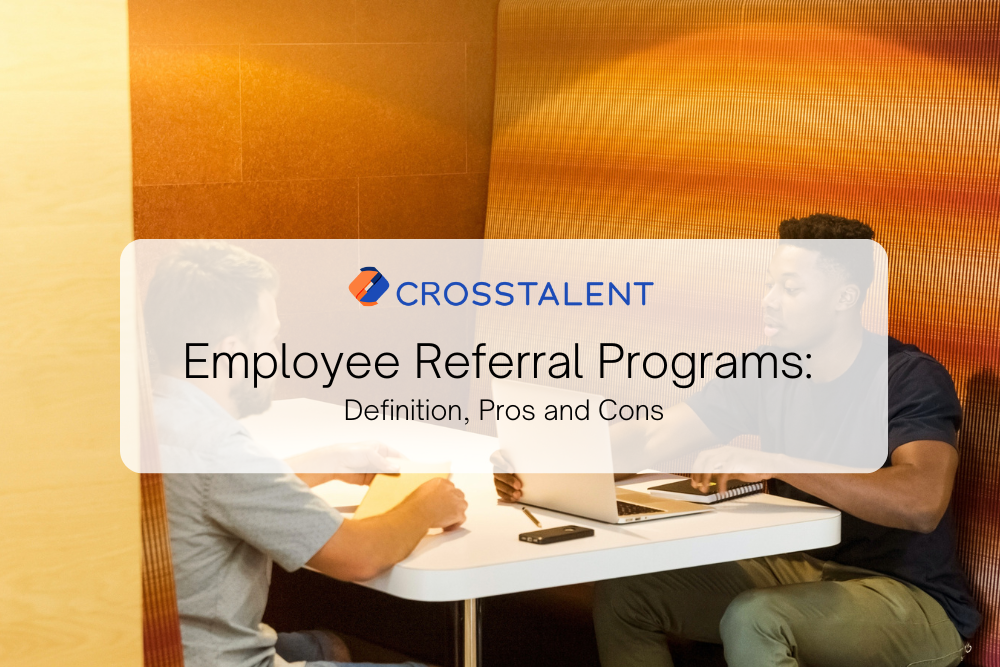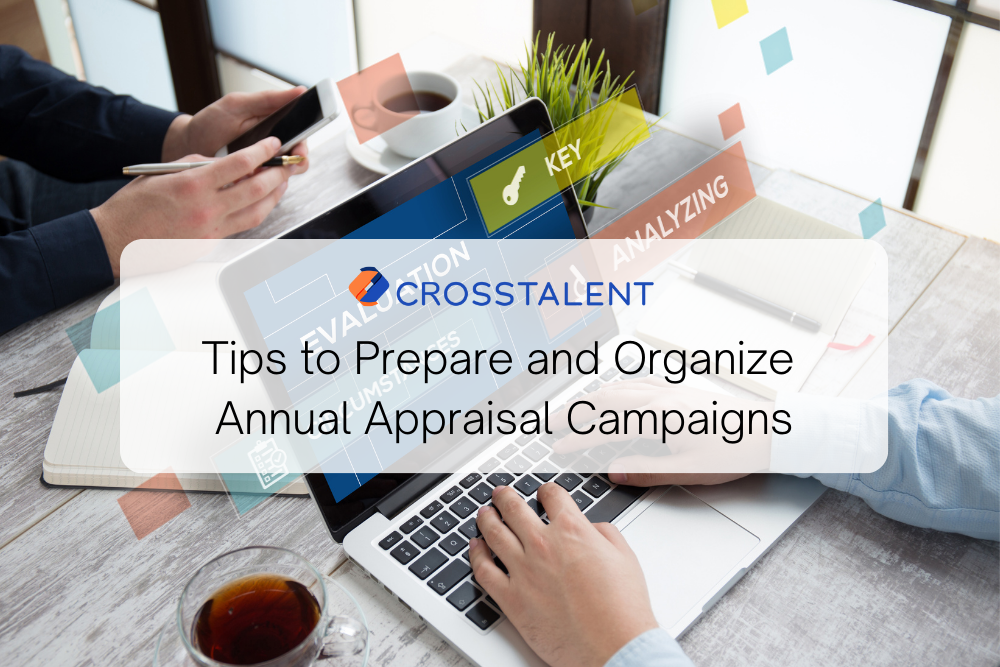An employee referral program is an increasingly widespread recruitment method.
In fact, in 2021, APEC carried out a study showing that, across all sectors, 48% of managers had already been recruited (at least once in their careers) by co-option.
Two prerequisites for a successful employee referral program strategy are your company’s excellent social climate and strong employer brand. This article will answer questions about employee referral programs in recruitment and HR functions.
We will include their advantages and disadvantages and how you can implement them in your company.
What is an Employee Referral Program?
Let’s start by looking at the different terms used: referral recruitment and employee referral program—they all mean the same. The term recruitment by recommendation sums up the definition of an employee referral program: recommending someone for a position in the company you work for.
Every employee, whatever their job level, has a professional or friendly network that can provide you—an employer—with a pool of potential candidates.
In today’s “war for talent” landscape, an employee referral program is a highly effective practice. It enables us to diversify our recruitment strategies and sources, aiming to find rare and high-quality profiles.
An employee referral program forms a three-dimensional contract between:
- The employee who recommends a candidate
- The recommended candidate
- The company
Advantages and Disadvantages of Employee Referral Programs
Like all recruitment strategies, implementing an employee referral program has advantages and disadvantages.
Advantages of an Employee Referral Program
Reduced Recruitment costs
By using an employee referral program, you spend less time finding expert profiles, less time managing vacancies on job platforms, or less time working with external recruitment agencies. Since the recruitment is based on recommendations, you’ll have fewer candidates and, therefore, fewer interviews to conduct. In other words, an employee referral program reduces your recruitment costs.
Faster Recruitment
Since recruitment is based on employee recommendations, the process can be accelerated. The candidate already knows one of the company’s employees. Thus, a strong bond is already established between the company and the candidates.
Higher Conversion Rate
As recommended candidates are pre-selected by employees, there’s a greater likelihood that their profile will match what you’re looking for, and the candidates will say yes to your offer.
Disadvantages of an Employee Referral Program
Employee referral programs have two main risks: the first is bonus hunting. Employees may be tempted to recommend their peers without a second thought. Having a clear strategy in place (see below) can help you avoid this pitfall.
The second risk is having duplicate employees, meaning you’ll recruit new talent with profiles identical to those you already have. This is quite logical since everyone tends to recommend people with similar backgrounds, skills, and experience. Employee referral programs could, therefore, prevent you from getting unique talent.
Related Reading:
Advantages and disadvantages of HRIS management software
A guide to human resource KPIs
HR Strategies for Employee Referral Programs
How to Implement an Employee Referral Program?
Successfully implementing an employee referral program within your company takes time: you need to start by defining your target, your objectives, and the process to be put in place.
Who Are Your Target Groups?
How do you define the target group for employee referral program recruitment? Ask yourself these simple questions:
- Are all positions open to this recruitment method?
- Can everyone recommend candidates or only specific people/positions (e.g., non-managerial/managerial)?
What Rewards or Bonuses Can You Give?
Next, you need to decide whether to offer a bonus or reward for successful employee referral recruitment. Some companies offer gift vouchers, while others offer trips for the best recommendations.
In most cases, a cash bonus is chosen. Then it’s a matter of deciding on the amount, but it may not be the easiest task:
- If the amount is too low, your employees may not be interested in recommending their peers. Therefore, no profile will be presented to you.
- If the amount is too high, you risk receiving too many CVs with low-quality profiles.
An important factor in determining the amount of this bonus is whether it is fixed for all profiles or whether you give your employees a higher bonus if the profile presented is unique or highly experienced. Both options are possible, but they must be clearly defined from the outset.
How Do You Define the Bonus Amount?
French companies that have set up an employee referral program reward people from €50 to €2,000. However, the average is around 600€. This amount also varies according to the company’s median salary. A bonus between a quarter and a third of the median salary is considered fair.
The main criterion to consider is your budget while considering all the above advantages (faster process with low recruitment costs).
When to Pay the Bonus?
There are several possibilities. You can pay the bonus either :
- In one lump sum when the employment contract is signed. That said, be careful, this is risky. If the new recruit does not complete the trial period or is not confirmed, you will not be able to ask your employee to return the amount given.
- When the probation period has ended. This is the decision taken by most companies.
- In two installments: the first is when the contract is signed, and the rest is when the probation period has ended.
How to Analyze the Success of Your Employee Referral Program
The employee referral program needs to be measured and monitored. These factors can help you analyze its success, especially when compared with the “classic” recruitment process:
- Recruitment time
- Applicant abandonment rate
- Conversion rate
- Number of recommended applications
- Retention rate
If the employee referral program principle doesn’t work in your company, you must ask yourself: Has the process been properly explained? Is the bonus attractive enough? But above all, have I created a desirable working culture where my employees are willing to encourage their loved ones to join the company?
3 Best Practices to Promote Employee Referral Programs
For a successful employee referral program initiative, you must communicate effectively with your teams and keep this communication alive. The best way to do this is through your HR portal.
There are several stages in communication. First, when the employee referral program is launched, you need to clearly explain the procedure: who can give recommendations, what the conditions are, and what bonus they’ll get—basically, everything you have carefully prepared during the set-up phase.
Next, you need to promote the program:
- Don’t hesitate to communicate internally about new talent recruited through the employee referral program. And mention who made the recommendations!
- Show your appreciation and value to your best co-opters by organizing internal events—an awards ceremony, for example. It’s a good way to thank them and motivate other employees to participate in an employee referral program!
- Have your co-opters give feedback/reviews: Nothing like testimonials or interviews to help your staff better understand the employee referral program process and encourage them to sign up. You can, for example, present concrete cases and demonstrate the benefits of recruitment through your employee referral program.
Recruit the Best Talent With an Employee Referral Program
Employee referral programs add value to a company’s recruitment strategy and, more broadly, to its talent management. This includes broadening the talent pool source, reducing costs and recruitment time, promoting employee recognition, and boosting internal mobility! If well organized, an employee referral program can become the number one recruitment lever and easily account for 25 to 40% of recruitment.
To help you organize a thriving employee referral program, adopt Crosstalent’s Recruitment solution. You can organize job offers and applications in one place and automate application administration to streamline the recruitment process. Talk to our team to book a demo.




